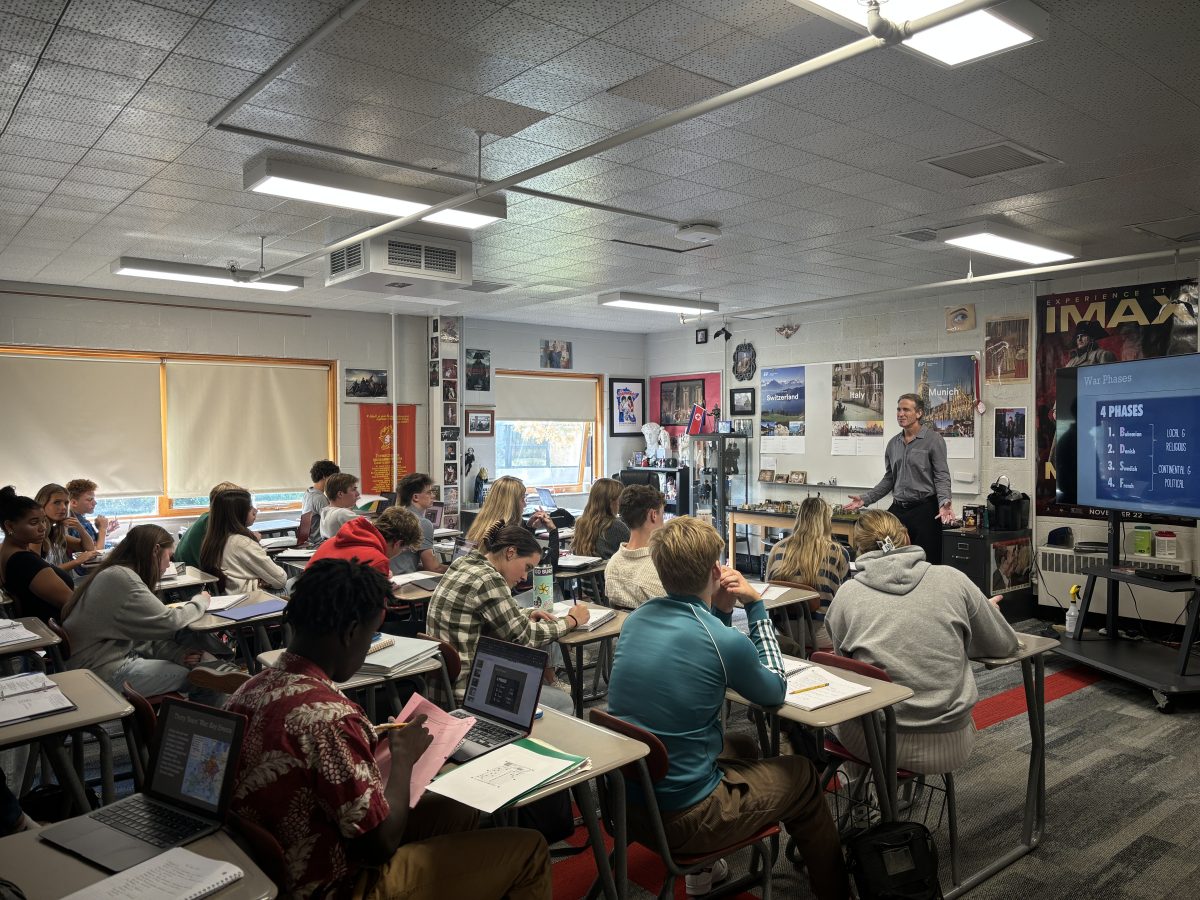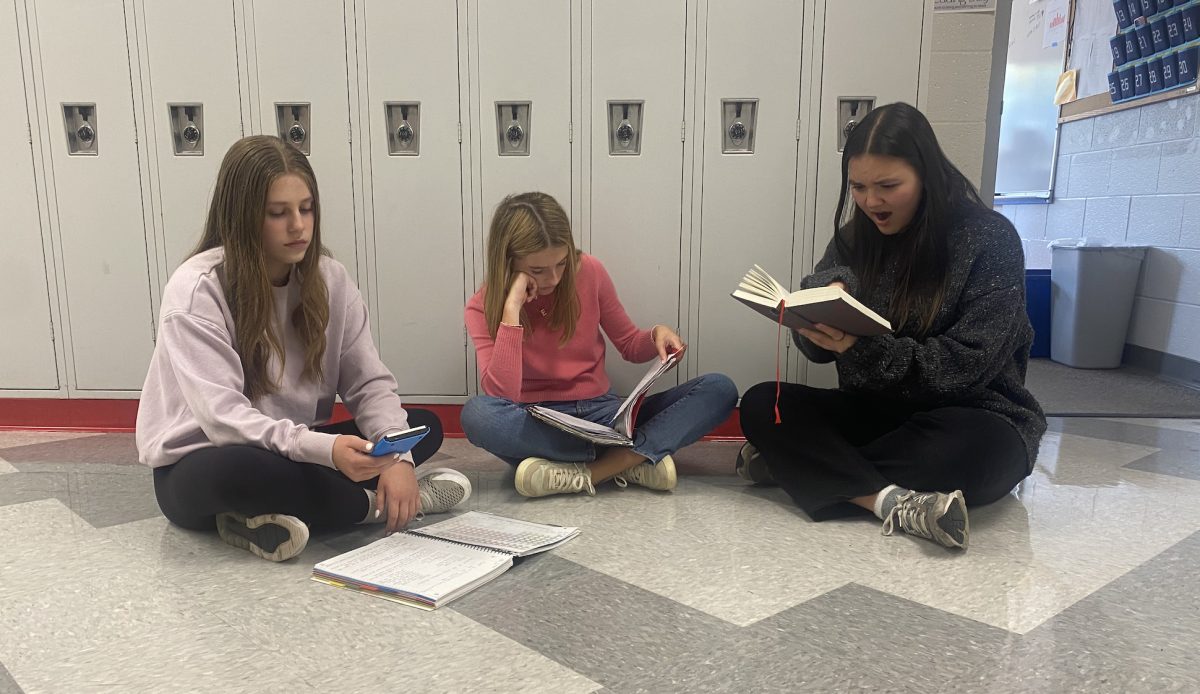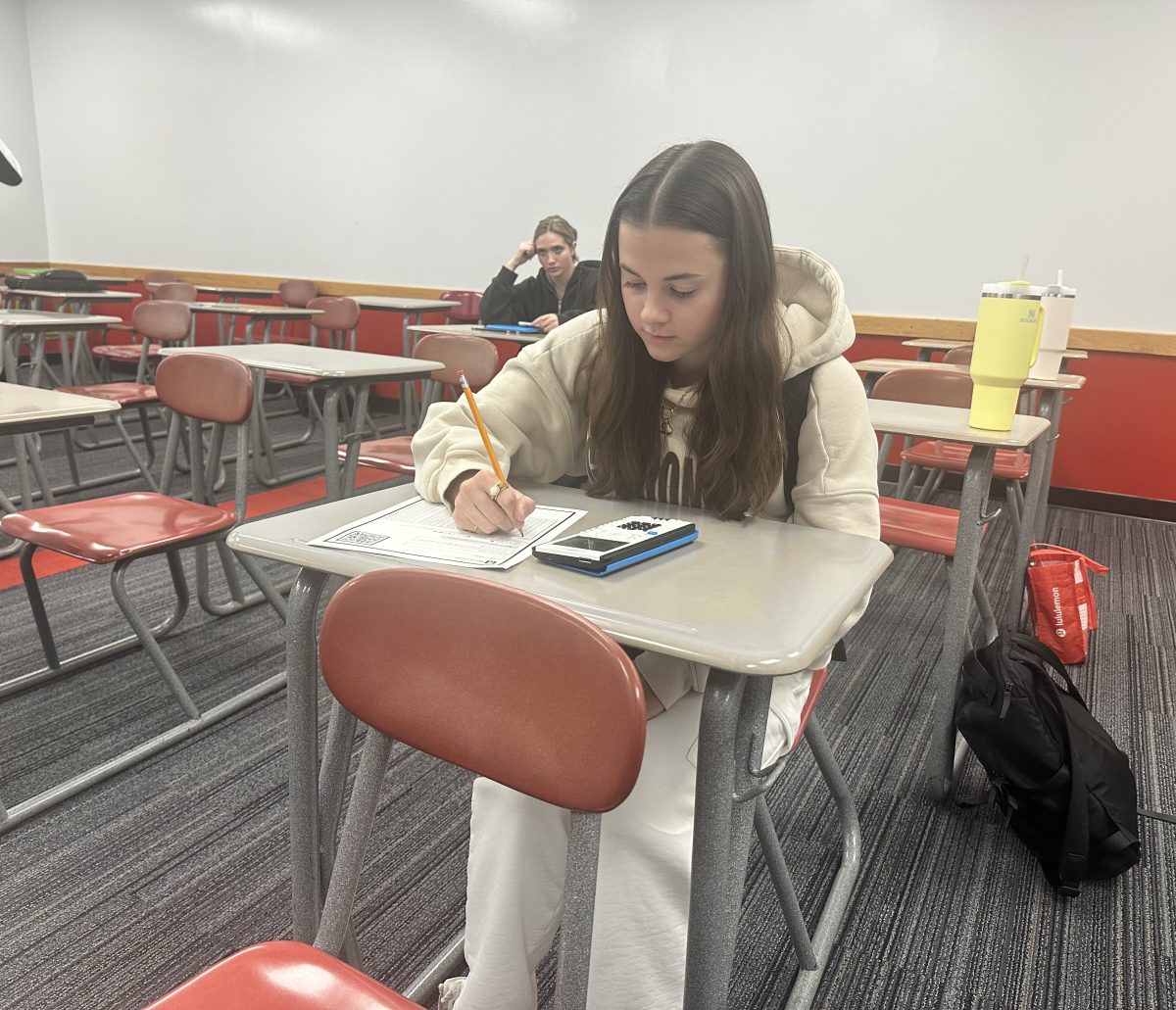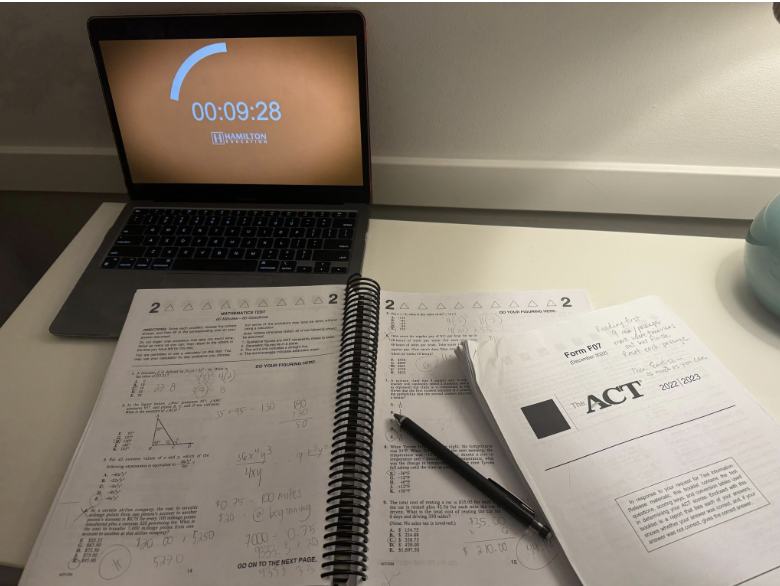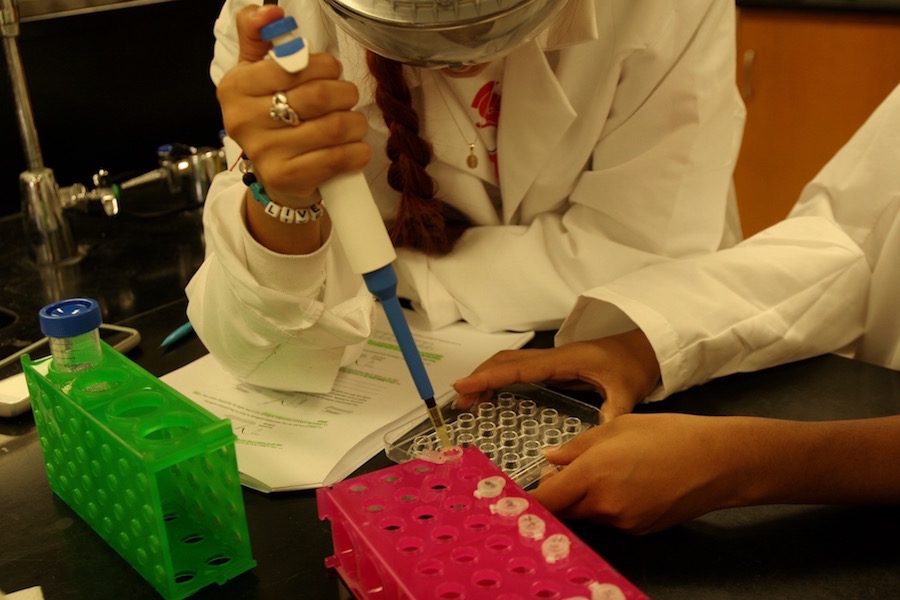BSM adds weekly block days to the schedule
Students in the biomedical science class take advantage of the extended time from block days to test blood samples in a lab.
Block days were added as a permanent addition to the school week this year, occurring every Wednesday and Thursday and consisting of four ninety-minute periods per day. In an attempt to further prepare students for college, BSM administrators studied seventeen different schedules and selected the one from which they believed BSM students would benefit the most. These block days allow teachers to accomplish activities during class and go more in-depth with their lessons.
Previously only used to accommodate days with mass or a speaker, weekly block days were implemented to help students build skills that will help them in both a school environment and the rest of their lives. “By shifting [the schedules] we help students with specific skills: cooperation, collaboration, creativity and communication; we call them ‘Next Generation’ skills. To do that, teachers need more time to structure activities that teach those skills,” senior high principal Dr. Susan Skinner said.
Teachers can accomplish more in a ninety-minute period than in a typical forty-minute class. “Forty minutes is enough time for some things, but it’s not enough time for everything. We’ve had block days in the past, but they were irregular. By having [them] regularly, it is easier for teachers to plan their lessons, and it helps students to pace out their week,” Skinner said.
For example, English classes use a lot of time in class discussing and examining literature. With a longer time period, English teachers are free to review the previous night’s assignments and go further in-depth with the reading. “[In an English class,] it’s a nice period during the week that lets [students] space out their homework for the week. In one class day, we can take a quiz on last night’s reading, discuss the chapters in class and prepare for the next day,” senior high English teacher Ms. Anne-Marie Dominguez said.
While block days provide more time in one day, classes now only meet four times a week. Thus, teachers must redesign their curriculum plans to prepare for the longer periods. “With the recurring block days, I have to take it week by week. Yes, I have my lessons planned out for the year, but with the block days it’s easy to tweak the lesson here and there if needed,” Dominguez said.
STEM classes particularly benefit from these block days because they offer more time to complete a lab and analyze data. “[Block days are great for] a math class when the material can get difficult, or for science when you do longer labs,” senior Colby Clinton said.
After experiencing their first block days of the year, some students believe that these longer blocks make it easier to get work done. “In some of my classes, such as Biomedical Science, it’s much easier to understand the lesson because you don’t have to break it up in a 40 minute session,” junior Claire Shinners said.
Despite the longer class period, many students harbor one key complaint: the length of the lunch periods. “If we get a long block day, I think we should get more time to get food,” Shinners said.

